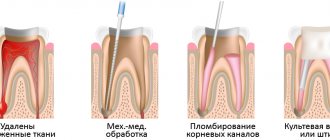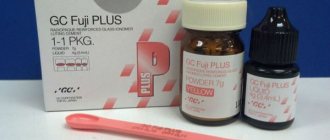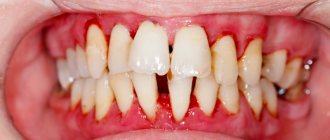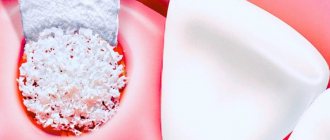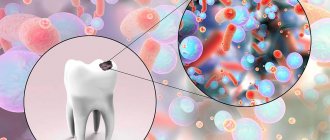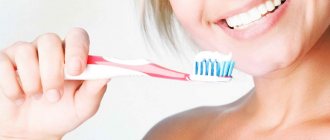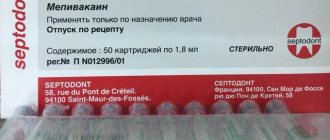- general information
- Compound
- Advantages of the drug
- Flaws
- Mode of application
- Review of manufacturers
- Price
Almost all patients, having decided on artificial restoration of teeth through prosthetics, know little about the materials used during the operation. Perhaps very few people know that there are a huge number of cement composites, each of which is designed for a particular clinical case. What is glass ionomer cement, what are its features and advantages, manufacturing specifics and varieties - this material is dedicated to this.
General information about glass ionomer cement
Glass ionomer cements (hereinafter referred to as GIC) are the latest innovative mixtures characterized by a heterogeneous structural content, where the base part is aluminosilicate glass, and polyacrylic acids act as a polymer matrix.
GIC is the optimal solution for placing fillings on a temporary basis, as well as being used as insulating liners.
Initially liquid in consistency, the mass gradually hardens and takes on the desired state. This happens in several stages:
- dissolution – the process of formation of ions;
- gelation – creation of gel-polymer chains, increase in pH level. The duration of the transition to this state is about 5 minutes;
- complete hardening of the material occurs within 24 hours.
The mixture reacts well with hard tooth tissues, intensely releasing fluoride elements. It is characterized by an average degree of strength, interacts better with enamel than with dentin tissue, and has an inhibitory effect on previously formed caries manifestations.
Composition of glass ionomer cement
The filling component consists of standard elements for such materials - distilled water and powder mass. As a result of their interaction, they become solid from a liquid state - this is ensured by the influence of acidic processes.
Most often, alkene polymers are used to create GIC:
- maleic;
- polyacrylic;
- itaconic.
They help reduce the viscosity of cement, slow down the process of gelation of the liquid and bind all the elements into a homogeneous mass several times faster. These qualities have a positive effect on the service life of the composition.
The liquid part basically contains distillers or tartaric acid. Powder – calcium silicate glass and calcium fluoride drops.
Upon completion of the filling processes, fluoride ions begin to be actively released into the oral cavity, which is an excellent obstacle to the development of secondary caries manifestations. The silicate substance is necessary for proper acid reactions to occur. Mineral substances in contact with glass form a silicon film, which is subsequently impregnated with acidic masses. In this case, the processing time becomes shorter, and the hardening time, on the contrary, becomes longer. The same principle is used to ensure hygroscopic reduction.
Zinc-eugenol cements
The basis of these cements are zinc oxide and eugenol. This group includes (D. Smith, 1996) three main types of cements:
1) zinc oxide eugenol proper;
2) hardened zinc oxide eugenol with filler;
3) based on orthoethoxybenzoic acid (EBA).
Zinc-oxide-eugenol cements consist of powder (zinc oxide, into which 1-2% zinc acetate, acetic anhydride, rosin and other substances can be added to accelerate hardening) and liquid (purified eugenol or clove oil - 85% eugenol). To speed up hardening, 1% ethyl alcohol or acetic acid, as well as a small amount of water, can be added to the liquid.
When mixing the powder with liquid, a resinous zinc eugenolate is formed, which binds zinc oxide grains into a dough-like, gradually hardening mass. In the presence of moisture, cement hardens quickly, after 10 minutes reaching a strength that can withstand compression from 7 to 40 mPa. The method of preparation and application is similar to that of zinc sulfate cement. Zinc-eugenol cement (“Cariosan”) is produced in the Czech Republic, which is widely used in clinical practice.
Strengthened zinc oxide eugenol cements with filler have slightly better mechanical properties. The powder consists of zinc oxide, to which 10-40% of finely ground natural (for example, rosin) or synthetic resins (polymethyl methacrylate, polystyrene or polycarbonate and catalysts) have been added. Euge-iii'i is also used as a liquid, in which a certain amount can be dissolved the above resins, catalysts (acetic acid) and antimicrobial agents (thymol or 8-hydroxyquinoline).
The hardening reaction is similar, the material can withstand compression of 35-55 MPa and tensile strength of 5-8 MPa. In order to improve the properties of zinc-eugenol cements, 50-66% orthoethoxybenzoic acid (EBA) was introduced into its liquid composition. This increased the strength of cements to 55-70 mPa under compression, which made it possible to recommend them also for fixation of orthodontic structures. The method of application is similar.
Advantages of glass ionomer cement
Glass ionomers have the following advantages, in comparison with analogue filling materials:
- ease of use - cement fills the cavity in one or two portions. Its use does not involve the processes of preliminary etching of the area and bonding of dentin;
- the unique property of hardening even in a humid environment - this quality ensures the active use of the composition in the treatment of caries cavities in the cervical zone, elimination of wedge-shaped pathologies, as well as caries, the affected area is the area located below the gum level;
- connection of the component with the tissues of dentin and enamel according to the intermolecular principle - makes it possible to install fillings with excellent marginal fit and eliminates the need to create retention areas during the treatment of the organ;
- complete adhesion to compositions with clove oil - thus, GIC is used as insulating liners that protect fabrics from excessive attachment of composites to them;
- adhesion to metal components;
- the ability to release ion enzymes into the organ cavity for at least a year after the filling is installed;
- weak shrinkage during polymerization - at the moment of transformation into a solid state, cement slightly increases in volume, which partially compensates for shrinkage processes;
- no irritating effect on dentin and pulp tissue - their composition is not aggressive and not dangerous in the treatment of deep caries if cement is used as a spacer;
- the thermal expansion indicator corresponds to the coefficient of expansion of the organ tissue - in such a situation, the filling is fixed more reliably, lasts longer, and its marginal fit is an order of magnitude better. This is a good preventive protection against the formation of damage to the enamel surface - cracks, chips.
Purposes of application
Temporary filling in dentistry is carried out for the following purposes:
- Bandages for the treatment of caries and a number of its complications.
- Control fillings for the diagnosis of pulpitis and caries.
- Insulating pads.
- Filling temporary teeth.
- Temporary fixation of orthopedic elements.
- Temporary filling of root canals for therapeutic purposes.
Accordingly, each task shows its own type of material. But universal compositions for temporary fillings are also popular in dentistry. We will get to know them all further.
Disadvantages of glass ionomer cement
The material is not without its shortcomings, some of which are quite significant:
- long maturation of the cement composition - it completely hardens only a day after installation, despite the fact that the first setting occurs within a few minutes;
- in the first hours the mixture is sensitive to a humid environment - it is at that stage that active leaching of ions occurs, which slows down the processes of final polymerization;
- poor resistance of the structural content to mechanical vibration - the material cannot be affected by a conventional drill immediately after installing the filling;
- etching of organ tissue is unacceptable;
- limited use for complex caries with a deep damaging effect;
- poor resistance to diametric tension, which completely excludes the use of GIC for the treatment of occlusal surfaces, as well as in clinical situations when the load on the tooth is distributed in different directions;
- shorter service life compared to conventional cement composite;
- average level of aesthetics, which limits its use on the frontal areas of the jaw row.
Combined medicinal pastes and their composition
Here we are talking about non-hardening preparations that are prepared from various drugs immediately before filling the carious cavity. Such pastes may contain antibiotics, sulfa drugs, vitamins, corticosteroids and other medicinal components. On site, the therapeutic lining prepared and placed on the bottom of the cavity is covered with artificial dentin or other material suitable for temporary filling. At the next appointment, the doctor will remove any remaining medication, assess the condition of the pulp, and if there are no signs of inflammation, perform a permanent filling.
The photo shows the process of removing a temporary filling.
As can be seen from all of the above, today in dentistry there is a fairly wide selection of materials for temporary fillings with different properties and indications for use. The choice of a particular drug is at the discretion of the attending physician and largely depends on the individual characteristics of the clinical picture.
1Abakarov, S.I. Protection of exposed dentin after odontopreparation at the stages of prosthetics, 2003.
Method of using glass ionomer cement
The algorithm for using standard glass ionomer cements is as follows:
- thorough treatment of the working area with a conditioning liquid, which is washed off 20 seconds after application and the cavity is well dried;
- the damaged tooth is isolated from moisture and salivary secretions for the entire period of setting of the mass - about 5 - 6 minutes;
- the liquid and powder composition are mixed until a shiny, homogeneous thick mass is obtained;
- they place it in the organ cavity and form a filling, while ensuring dense condensation using a cotton swab or a special device with a spherical movable working tip;
- after giving the filling the desired shape, its relief is coated with varnish;
- after 1 – 2 days, treat with a drill. After this, the tooth can function normally.
Overview of glass ionomer cement manufacturers
Despite the fact that the composition of the GICs of the main manufacturers is almost identical, the following line of leading manufacturers are distinguished in the domestic market of dental materials, firmly holding the rating for a long period of time. It is advisable to consider the features in more detail.
Arde Kwik Tsem
It is a fluid hybrid mixture of a double solidification principle. Ideal for attaching veneers, bridge devices, and inserting pins during restoration with implants.
Thanks to its unique structural content and viscous consistency, it ensures the highest quality filling of the tooth cavity.
It has a serious disadvantage - it can provoke individual intolerance and cause allergic reactions of varying degrees of intensity.
Arde Fix
It is used for permanent fixation of orthodontic and prosthetic devices. Not prone to dissolution and oxidation in the oral cavity. If the composition is mixed correctly, side effects and complications are completely excluded. May cause a short-term decrease in the sensitivity of taste buds, which resolves spontaneously after some time. It does not tolerate the presence of eugenol elements in the work area.
Fuji Plus
A distinctive feature of the mixture is its modification with a composite, which provides a number of advantages:
- stronger fixation;
- possibility of use when interacting with metal, non-metal, ceramic prosthetic structures of all types in the process of orthopedic manipulations.
The disadvantage is the weaker light reflectivity of the material in the solid state.
Ketak Tsem
The main advantage is simplicity and ease of use. Shorter time for manual mixing and bringing to the required consistency.
It has high aesthetic indicators - a matte, slightly silky surface, which is especially important when working on the frontal area of the jaw.
The disadvantage is sensitivity to low temperatures, which increase the hardening time.
Tsemion F
The composition has good radiopacity, withstands high mechanical loads in comparison with analogue products, and has a low solubility index.
Adhesive to enamel and dentin tissues.
Allows you to achieve a high level of marginal sealing, releases fluoride over a longer period of time, which helps strengthen tooth enamel. It has a low pain sensitivity threshold and causes virtually no discomfort in patients during the rehabilitation period after treatment.
Glass ionomer cement price
Depending on the manufacturer, the cost of cement of various brands looks something like this:
Arde Kwik Cem - from 1,300 rub.
Arde Fix - from 1,420 rub.
Fuji Plus - from 1,520 rub.
Ketak Tsem - from 1,380 rub.
Tsemion F - from 1,240 rub.
Having placed a filling from the material discussed in this article, you don’t have to worry that after a short time it will crumble under temperature or mechanical influence. And although in some respects cement is inferior to more expensive mixtures, with proper use the tooth will retain its functionality for a fairly long period of time.
What materials are used for temporary filling?
Temporary fillings are installed in cases where treatment requires several visits to the doctor. For example, to eliminate the inflammatory process or kill the nerve during pulpitis, the doctor places the appropriate medicinal substance and covers it with a special filling material on top. This ensures a hermetically sealed cavity, which prevents bacteria and infection from entering. But unlike permanent fillings, the material for temporary fillings may not be as durable. Read further in this article about what formulations are used for this.
